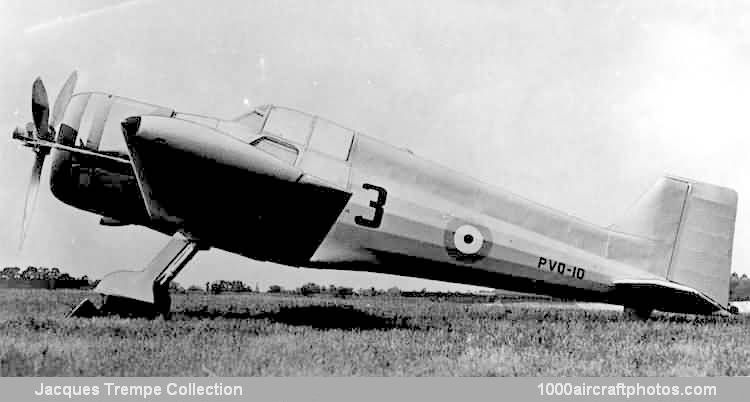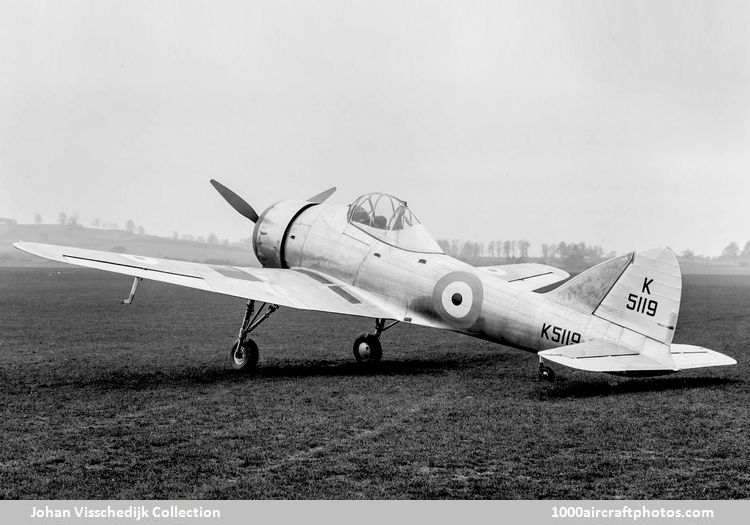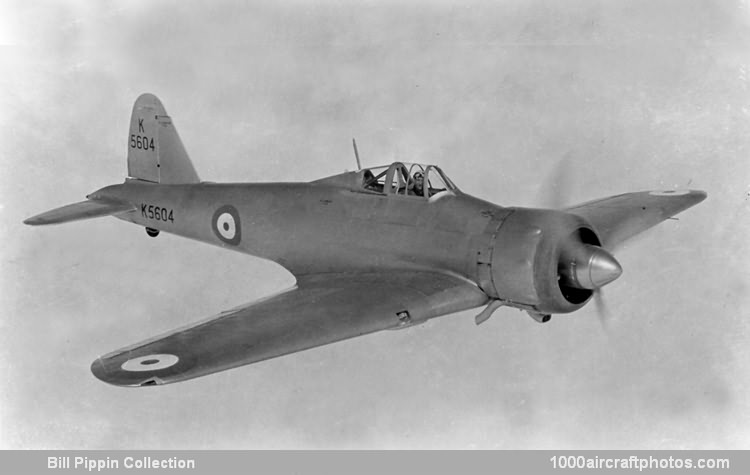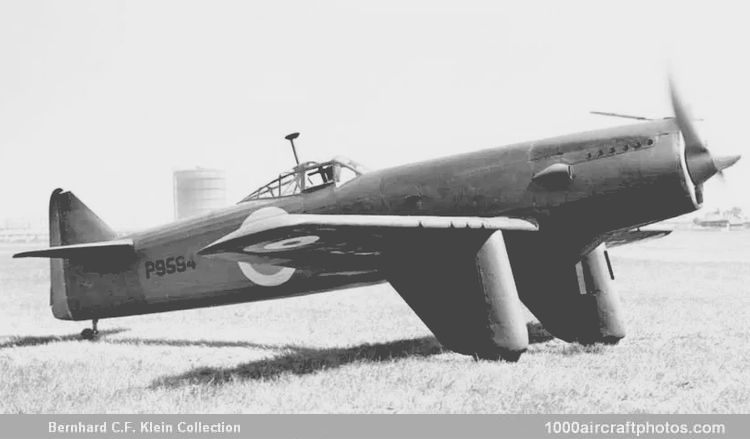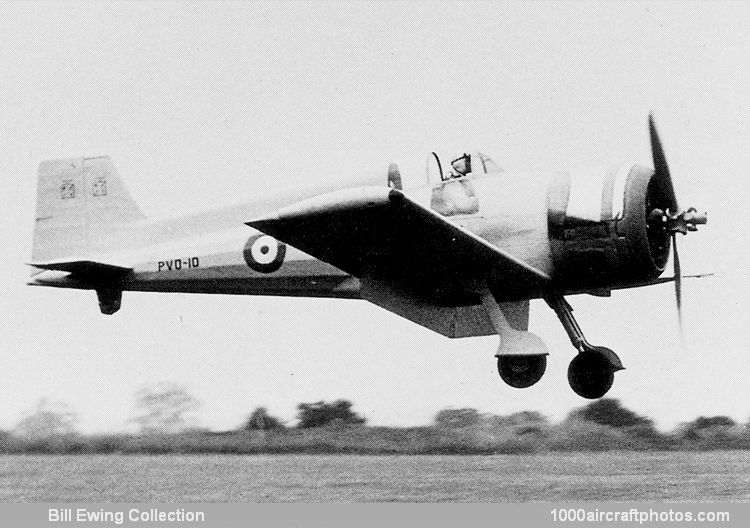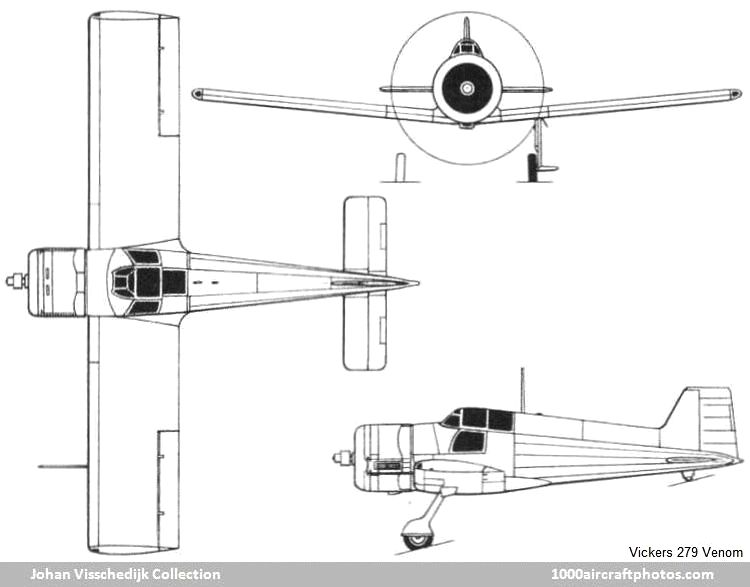09/30/2011. Remarks by
Johan Visschedijk: "Fundamentally a redesigned and improved Type 151 Jockey and, indeed, initially known as the Jockey II, the Type 279, for which Vickers adopted the name Venom, was intended to meet the requirements of Specification F.5/34. Other contenders were:
Martin-Baker M.B.2 (
Bernhard Klein Memorial Collection)
Powered by a 625 hp Bristol Aquila AE.3S nine-cylinder sleeve-valve radial engine enclosed by a longchord
NACA cowling, the Venom was a highly sophisticated aircraft, with a metal monocoque fuselage, its stressed skin being affixed by countersunk rivets.
The Venom had a sideways-hinged engine mounting and it was unique in having 90° deflection flaps. A battery of eight 0.303 in (7.7 mm) machine guns was mounted in the wings from the start of test flying. First flight took place at Brooklands on June 17, 1936, pilot was Mutt Summers. The Venom proved exceptionally maneuverable, with outstanding roll rate and turning radius, but it lacked the power to compete seriously with its contemporaries, and, as no sufficiently compact British air-cooled radial of adequate power was available for installation, it was scrapped in 1939.
Vickers 279 Venom (
Bill Ewing Collection)
The Venom was '
Class B' registered as O-10, in this case the 'O' was used by Vickers from December 1929 until December 1947, the '10' dignified the tenth aircraft used by Vickers for 'B' activities. The prefix 'PV' was added by the manufacturer and stood for 'Private Venture'."
